astrophysics
Latest
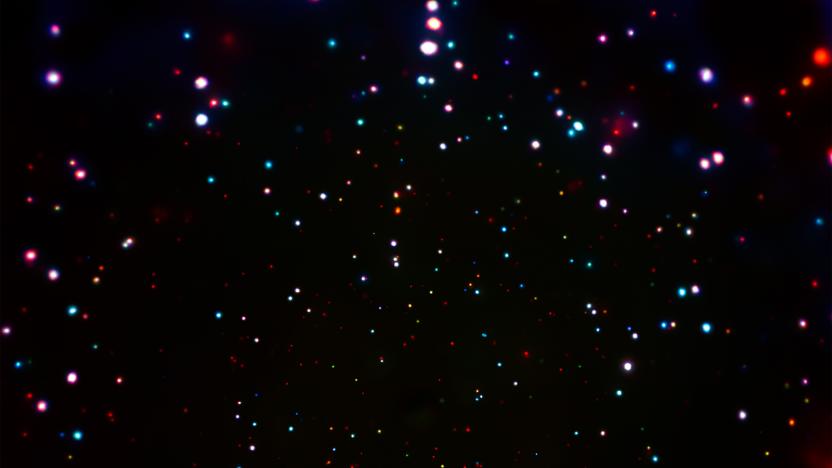
Deepest X-ray image to date uncovers a black hole bonanza
Believe it or not, that's not a star field you're looking at. Researchers have used NASA's Chandra X-ray Observatory to produce an X-ray image of space (the deepest-ever X-ray, in fact) that has uncovered an abundance of supermassive black holes -- they represent 70 percent of the objects in the picture above. Many of these holes would normally be undetectable, especially distant ones from the early universe, and it took 11.5 weeks of total observation time to spot them all. Think of it as a very, very long exposure photo, just for X-ray emissions.
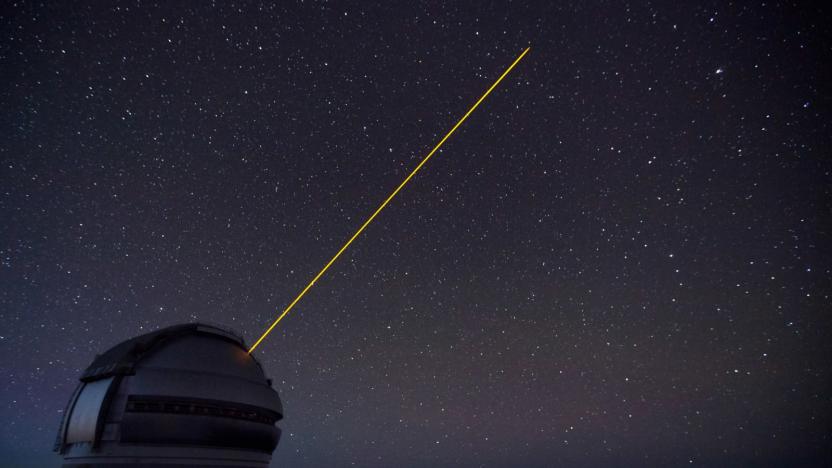
Scientists trace a cosmic radio burst to its home galaxy
Fast radio bursts in space have confused the astronomy community for years. What causes them, and where do they come from? At last, researchers are getting some answers. For the first time, scientists have traced one of these bursts back to its home galaxy. They first used the Karl G. Jansky Very Large Array radio telescope to pinpoint the object's exact location, and then used the Gemini North telescope to create an image of that patch of sky. The most surprising part isn't how they did it, though -- it's where the radio blasts are coming from.
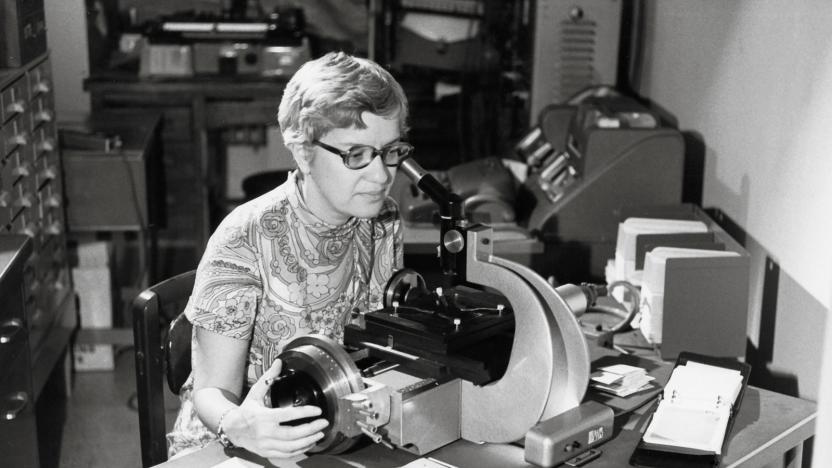
Dark matter scientist Vera Rubin dies at 88
It's a sad time for the astrophysics world. Vera Rubin, who was instrumental to confirming the existence of dark matter, has died of dementia at the age of 88. While the concept of dark matter had been proposed by Fritz Zwicky back in 1933, it was Rubin and her colleague Kent Ford who provided firm evidence in the 1960s and 1970s. They noticed that the stars at the outside of spiral galaxies spin just as quickly as those on the inside -- according to the understanding of gravity at the time, these enormous star formations should tear themselves apart. The only viable explanation was an invisible mass, roughly 10 times larger than what we can see, that was holding everything together.
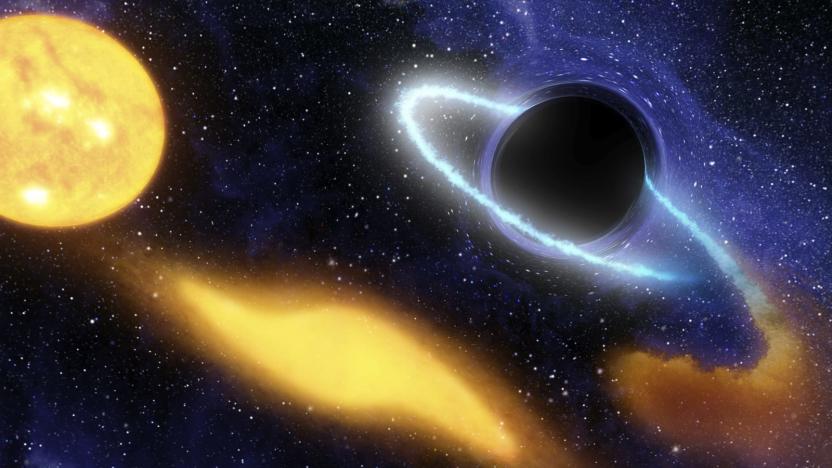
Black hole detection is becoming much easier
It's still relatively difficult to spot black holes (after all, they trap light), but it may be relatively commonplace in the near future. An international team of researchers has developed a detection technique that should identify a more frequent 10 black holes per year. By using radio telescopes to capture multiple snapshots of gravitational microlensing events (where objects like black holes bend light), you can obtain details like distance, mass and velocity for subjects you can't easily study using visible light.

Isaac Newton text is the most expensive science book sold
Science texts aren't normally top earners at auctions, but Christie's just proved that there are major exceptions to this rule. The auction house has sold a first edition of Isaac Newton's 1687 masterpiece, Principia Mathematica, for just over $3.7 million -- the most expensive science book sold to date. It was originally estimated to sell for no more than $1.5 million, but its rarity likely helped drive the price up. This is a rare continental Europe edition, with only 80 copies published versus the 400 for Britain.

Giant black hole could be to blame for brightest supernova ever
3.8 billion years ago, a star in the southern sky exploded and released 570 billion times more light than our sun and more than twice as much as any other recorded supernova. That star, dubbed ASASSN-15lh, is the brightest supernovae ever observed and, a year after witnessing its superluminescence in 2015, astronomers believe that they've figured out why it burned so brightly: It was being eaten by a supermassive black hole a billion times more massive than the sun.

Caltech fires up LIGO to hunt for more gravitational waves
Nearly a year after LIGO, the Laser Interferometer Gravitational-wave Observatory, made physics history this past February, Caltech researchers have finally finished upgrading its capabilities and are ready to resume their hunt for gravitational waves. The system transitioned from experimental runs to regular operations on Wednesday morning, November 30th.
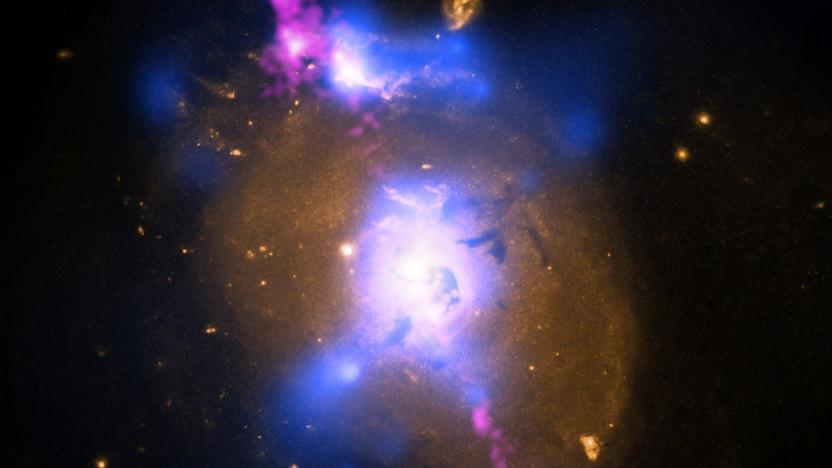
Test can show if the speed of light has changed
Modern science assumes that the speed of light has always been the same. Researchers have suggested that this seeming constant might have changed over time, however, and they now have a way to find out whether or not that's true. Professors João Magueijo and Niayesh Afshordi have developed a prediction that should test for changes in light speed. They've given the fluctuations in density the early universe, detectable through cosmic background radiation, an exact spectral index number based on the theory that light was much faster in the first seconds following the Big Bang (0.96478, if you're curious). If future measurements of the index line up with this number, they'll support the notion that light speed has shifted.

Massive galaxy cluster found 'hiding' behind the Milky Way
You would think that it would be easy to spot a cosmic structure as enormous as a supercluster holding legions of galaxies, but not so -- the Milky Way can hide all kinds of objects, usually due to dust and stars obscuring the view. If you need proof, you just need to ask the astronomers who have discovered the Vela supercluster, a giant collection of galaxies about 800 million light years away (shown as "VSC" above). They only detected it by making "thousands" of spectroscopic studies of partially obscured galaxies -- it was hidden on the far side of the Milky Way.
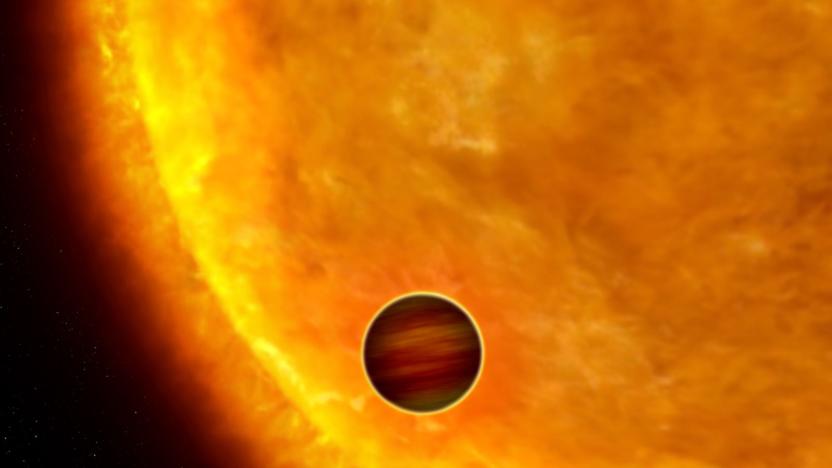
Scientists can directly observe alien planets with a new tool
Astronomers usually have to study exoplanets through roundabout ways, such as watching for the decrease in light when a planet crosses in front of a star. However, they'll soon have a reliable way to observe those alien worlds directly. A Princeton-led research team has successfully tested CHARIS, a supercooled spectrograph instrument that isolates reflected light from large planets (bigger than Jupiter) to reveal their age, mass and temperature. The key is its use of a coronagraph that separates planetary light from the host star's rays -- effectively, it's making sure the needle stands out from the haystack.
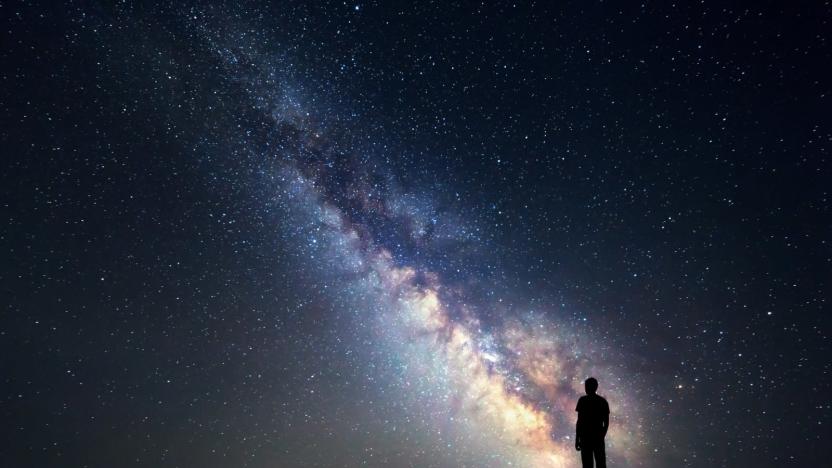
Humanity's corner of the Milky Way may be larger than expected
If you accept conventional views of the Milky Way, humans live in a sort of cosmic cul-de-sac: our star is in the Orion Arm (aka Local Arm), a small spur sitting in between the much larger Sagittarius and Perseus arms. A team of international researchers might just shake up that sense of place, however. They've published a study indicating that our arm is much, much larger than once thought. Instead, it incorporates a large arm that extends almost all the way to the Perseus Arm, and another long spur that branches between the Orion and Sagittarius arms. It's now believed to be about 25,000 light years long, or several times longer than expected.
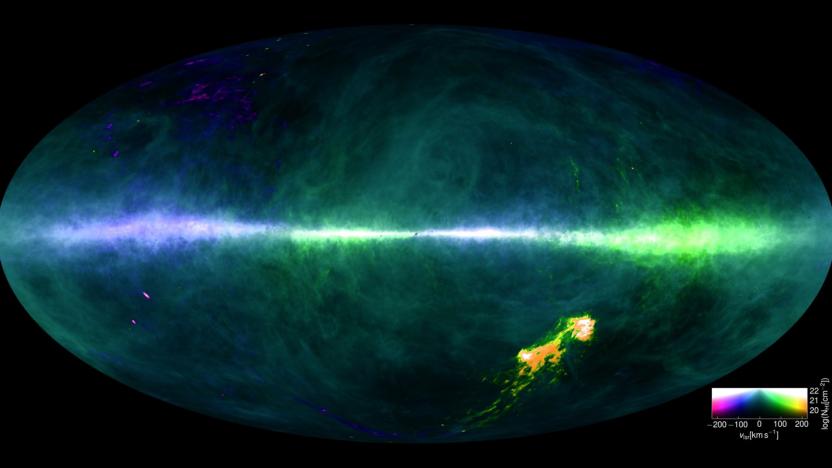
Scientists map the Milky Way Galaxy in exceptional detail
There have been detailed maps of the Milky Way before, but none quite so ornate as this. Researchers in the HI4PI sky survey have created a fine-grained map of our home galaxy using its most common material: neutral atomic hydrogen. Such studies have taken place before, as you might guess. However, the use of 10 billion data points from large radio telescopes (the Parkes Observatory and Effelsberg 100m) and noise-filtering algorithms have produced an image with twice the sensitivity as the previous best, and four times the angular resolution. The result? A view of the Milky Way so comprehensive that you can finally see the finer details of cloud structures in between stars -- they were too blurry before.
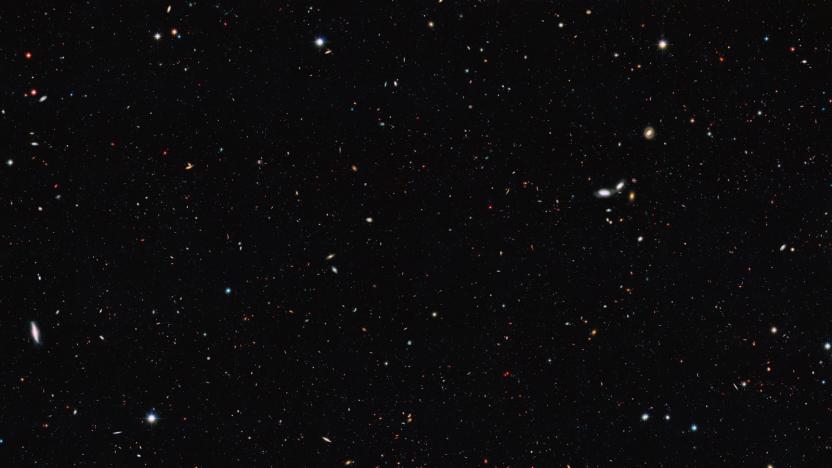
Universe may hold 10 times more galaxies than once thought
The observable universe was already incomprehensibly big, but it now looks to be even bigger. Astronomers have determined that are likely about 10 times more galaxies than previously thought, or between 1 trillion to 2 trillion. We just don't have the technology (or physical proximity) to detect them all, according to the researchers. They reached the conclusion after converting Hubble Deep Field images into 3D to study the number of galaxies at a given point in the universe's history, and using mathematical models to infer the possibility of galaxies that we haven't spotted. Simply speaking, the volume of galaxies seen over time doesn't make sense unless there are many we aren't aware of.

Strange galaxy is made almost entirely of dark matter
A galaxy isn't big just because it has many stars in it. A worldwide research group has discovered that a galaxy in the Coma cluster, Dragonfly 44, consists of 99.99 percent dark matter. It has about as much mass as our own Milky Way galaxy, but far fewer stars. The team determined the presence of the invisible, mysterious substance based on the motions of the stars themselves -- there were too few of them to be moving so quickly. If there weren't a gravitational force like dark matter to hold them together, those stars would simply fly away.

Close-by exoplanet may have an oxygen-rich atmosphere
At last, scientists might have spotted a rocky exoplanet with an oxygen-heavy atmosphwere... only it's not the alternate Earth you might be hoping for. Astronomers have determined that GJ 1132b (aka Gliese 1132b), a relatively close 39 light years away, stands a real chance of having oxygen-rich skies. However, it's also scorching hot at 450F (232C). With that kind of heat, any water vapor would have a greenhouse effect -- the atmosphere would cook the surface (turning it into a magma ocean) and eliminate any hope of life.
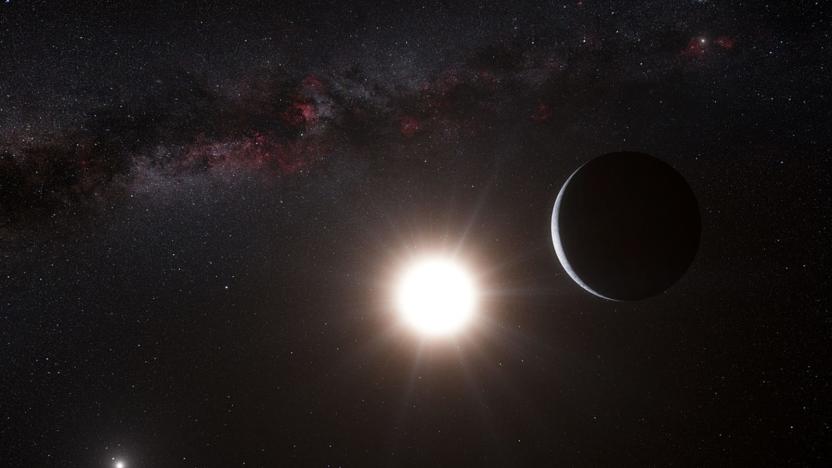
Astronomers scan for disappearing stars
Scientists are adept at spotting stars, even very old ones. But what about stars that disappear? A handful of researchers, led by Uppsala University's Beatriz Villarroel, aims to find out. They've been comparing sky surveys to see if any light sources (usually stars) have disappeared between these scans. Out of the 300,000 sources in the study, they've found one that appears to have vanished without a trace.

The first gravitational wave discovery wasn't a fluke
If you were worried that the first confirmed detection of gravitational waves was just a one-off result... don't be. Researchers analyzing LIGO data have verified a second instance (recorded in December 2015) where two black holes merged and produced the hard-to-spot behavior. The circumstances are decidedly different this time around, though. Ars Technica observes that the black holes were much smaller than those in the first instance, and spent more time on their collision course. While that offered more data to collect, the reduced intensity also introduced more errors -- it was harder to determine the masses of these holes.
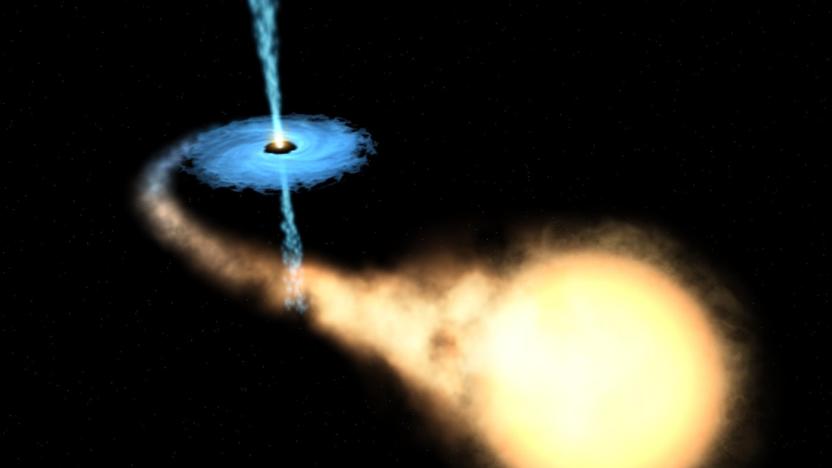
Two black holes are defying the limits of science
Even astrophysicists are occasionally surprised at what they find in the cosmos. University of Cambridge researchers have discovered that two black holes are consuming their companion stars at rates much faster than currently established limits would allow -- so fast, in fact, that the gas is ejecting at a quarter of the speed of light. To top things off, this is the first time that scientists have seen winds flowing away from ultra-luminous (and currently mysterious) X-ray sources.
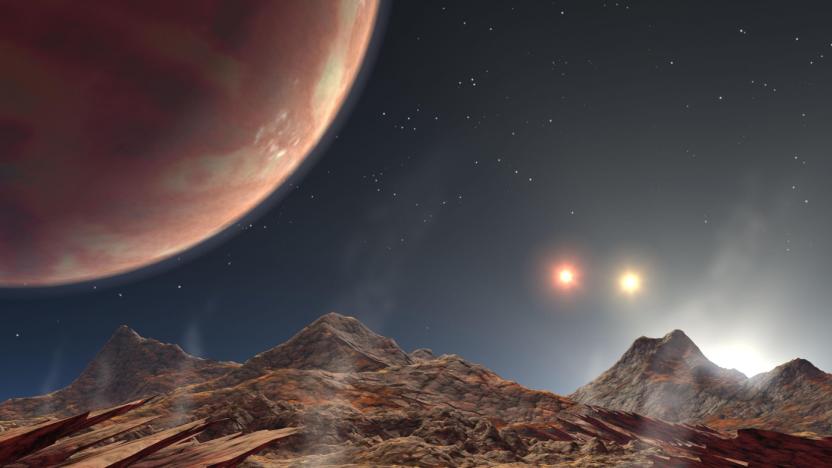
Scientists find rare 3-star system with a hot Jupiter-like planet
Any notion that star systems are boring just got tossed out the window. Thanks to sharp images from the Kilodegree Extremely Little Telescope, researchers have discovered not just a rare three-star system, but one with a "hot Jupiter" -- a gas giant orbiting close to one of its stars. The oddball planet (KELT-4Ab, shown below) revolves around a central star every three days, while the two remaining stars orbit each other every 30 years and the main star every 4,000 years.
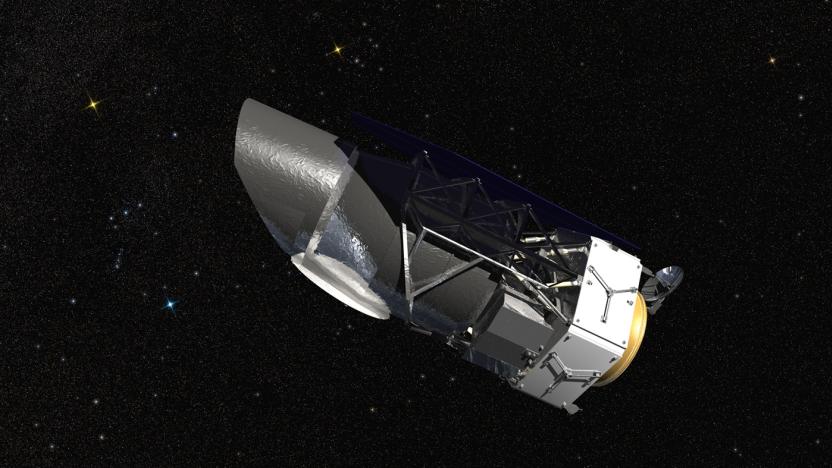
NASA's next space telescope sees 100 times more than Hubble
As much as the Hubble Space Telescope has done to shine a light on the darkest corners of the universe, it doesn't hold a candle to what's coming next. NASA has started work on WFIRST (Wide Field Infrared Survey Telescope), a space observatory with a field of view 100 times larger than that of Hubble -- if the old telescope was a porthole, the new one is a giant window. It's also designed to block the glare of individual stars, making it easier to determine the chemical makeup of exoplanets.

